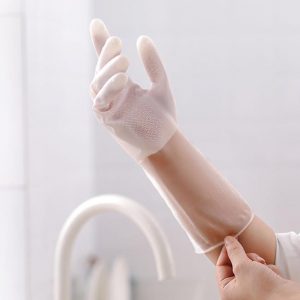It’s important to note that latex allergies can develop over time with repeated exposure to latex products. Those at higher risk for latex allergies include healthcare workers, individuals with a history of allergies, and people who have undergone multiple surgeries or medical procedures involving latex products.
To minimize the risk of allergic reactions and accommodate individuals with latex sensitivity, several alternative materials for gloves and other products have been developed. The most common alternatives to latex include:
- Nitrile Gloves: Nitrile gloves are a popular alternative to latex gloves. They are made from a synthetic rubber material and offer similar barrier protection and puncture resistance as latex gloves. Nitrile gloves are also resistant to many chemicals and have a lower risk of causing allergic reactions, making them an excellent choice for medical, laboratory, and industrial applications.
- Vinyl Gloves: Vinyl gloves are made from synthetic PVC (polyvinyl chloride) material. While they are the most economical option, they offer less elasticity and puncture resistance compared to latex or nitrile gloves. Vinyl gloves are suitable for low-risk tasks in industries like food service and housekeeping, but they may not provide adequate protection for medical or high-risk applications.
- Neoprene Gloves: Neoprene gloves are made from synthetic rubber and offer good resistance to a wide range of chemicals, making them suitable for some industrial and laboratory applications.
- Polyethylene Gloves: These gloves are thin and lightweight and are often used for short-duration tasks that require minimal protection, such as food handling.
When choosing alternatives to latex gloves, consider the specific requirements of the task or application, such as the level of protection needed, chemical resistance, and comfort. Always check the product labeling and ensure that the gloves meet the necessary quality and safety standards for their intended use.
Moreover, it’s crucial for healthcare facilities, workplaces, and businesses to be aware of latex allergies and have appropriate policies in place to accommodate individuals with latex sensitivity. This may include providing non-latex glove options for employees and customers or patients, and maintaining a latex-free environment in specific areas when necessary.
















